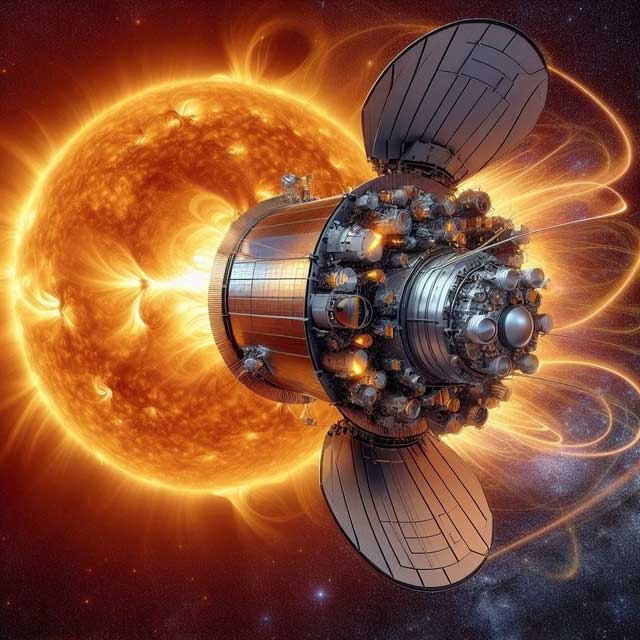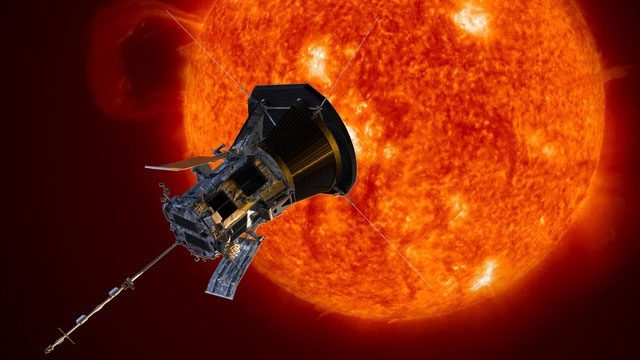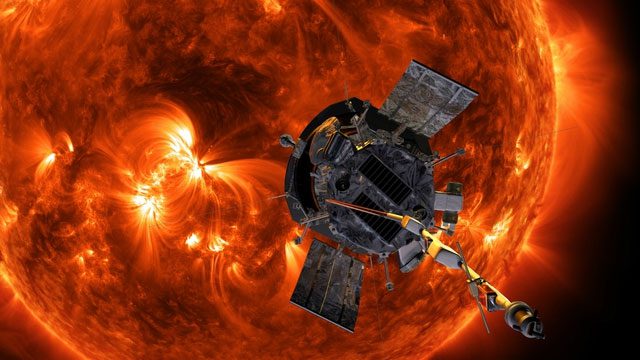The Sun is our star, providing the light and heat essential for our survival. However, the Sun is also a mysterious and dangerous celestial body, continuously releasing powerful energy and matter that affect the entire Solar System.
To truly understand the Sun, we must observe it closely and even “touch” it. This may sound like an impossible task, but human ingenuity and courage have turned this dream into reality. There is a solar probe called the Parker Solar Probe, which is conducting the closest exploration of the Sun in human history.

The Parker Solar Probe.
The Parker Solar Probe is a solar science mission initiated by the National Aeronautics and Space Administration (NASA) in August 2018. Its primary objective is to study the Sun’s outer atmosphere, the corona, as well as solar winds and high-energy solar particles.
To achieve this goal, the Parker Solar Probe will orbit the Sun a total of 24 times before 2025, getting closer to the Sun with each pass until it eventually flies within just 6.1 million kilometers (3.8 million miles) of the Sun’s surface. This distance is equivalent to 8.86 times the diameter of the Sun, much closer than Mercury’s orbit. At such a distance, the Parker Solar Probe will face temperatures of up to 1,400 degrees Celsius (2,550 degrees Fahrenheit), as well as intense solar radiation and powerful magnetic fields.
Nour Raoufi, an astrophysicist at the Johns Hopkins University Applied Physics Laboratory and project scientist for the mission, stated: “It’s like we are landing on a star. This is a great achievement for all of humanity. It’s like the moon landing in 1969.”

The Parker Solar Probe has made several close approaches to the Sun.
The Parker Solar Probe has made numerous close approaches to the Sun, each time breaking records for human exploration of the Sun. On September 27, 2023, it reached its closest point to the Sun, just 7.26 million kilometers away, achieving speeds of 636,000 km/h. It is the fastest human-made object ever created, traveling over 300 times faster than a Lockheed Martin F-16 fighter jet and over 200 times faster than a bullet fired from a rifle. On December 24, 2024, the Parker Solar Probe is expected to plunge toward the Sun once more, this time flying just 6.1 million kilometers from the Sun’s surface, with speeds reaching 700,000 kilometers per hour. This will mark humanity’s closest exploration of the Sun.
While these record-breaking achievements are remarkable, the true goal of the Parker Solar Probe is to uncover the secrets of the Sun. There is a particular mystery about the Sun that scientists hope to solve with this journey: why is the Sun’s outer atmosphere over 200 times hotter than the surface below? The outer atmosphere of the Sun, known as the corona, reaches temperatures of up to 1.1 million degrees Celsius, while the surface temperature is only about 5,500 degrees Celsius.

The Parker Solar Probe will fly into the solar corona and collect data.
This is strange because the Sun’s primary source of heat is the nuclear fusion reactions occurring in its core. The surface of the Sun is at least 5,000 kilometers away from the core, and the outer atmosphere of the Sun extends 8 million kilometers from the Sun’s surface.
To tackle this issue, the Parker Solar Probe will fly into the Sun’s corona and collect data. During its data collection, the probe passed through a powerful solar storm known as a coronal mass ejection in September 2022. This was one of the strongest solar storms recorded, yet the Parker Solar Probe remained safe and operational.
Coronal mass ejections are another form of energy released by the Sun. They are characterized by the expulsion of a mass from the Sun over minutes to hours (with speeds typically ranging from tens of km/s to over 1,000 km/s). Large-scale coronal mass ejections disrupt the corona’s macro shape and magnetic field configuration.
Coronal mass ejections are significant indicators of solar activity. They can impact planets and satellites in the Solar System, even causing geomagnetic storms, auroras, and other phenomena. One of the missions of the Parker Solar Probe is to observe the origins and development of coronal mass ejections and how they heat the corona and accelerate solar winds.

The Parker Solar Probe mission will conclude in 2025.
Another mission of the Parker Solar Probe is to detect solar energetic particles, which are high-energy particles from the Sun that can be harmful to astronauts and satellites in space. The Parker Solar Probe will help us explore the sources, acceleration processes, and propagation of these solar energetic particles, which will ultimately be used to better protect satellites and astronauts.
The exploratory journey of the Parker Solar Probe will continue as it approaches the Sun until the mission concludes in 2025. By then, it will have completed its 24th journey to the Sun and will provide invaluable knowledge and surprises about the Sun for humanity. The Parker Solar Probe represents a significant milestone in humanity’s quest to explore the Sun, showcasing human intelligence and courage while opening new horizons for our future.


















































